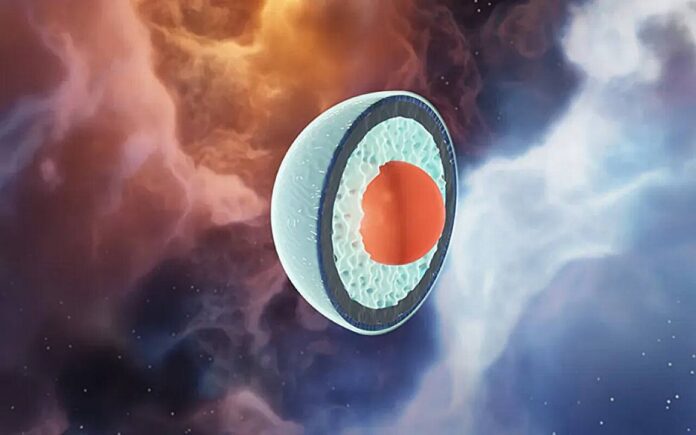Neutron-star cores contain matter at the highest densities reached in our present-day universe, with as much as two solar masses of matter compressed inside a sphere of 25 km in diameter. These astrophysical objects can indeed be thought of as giant atomic nuclei, with gravity compressing their cores to densities exceeding those of individual protons and neutrons many-fold.
These densities make neutron stars interesting astrophysical objects from the point of view of particle and nuclear physics. A longstanding open problem is whether the immense central pressure of neutron stars can compress protons and neutrons into a new phase of matter, known as cold quark matter. In this exotic state of matter, individual protons and neutrons no longer exist.
“Their constituent quarks and gluons are instead liberated from their typical color confinement and are allowed to move almost freely,” explains Aleksi Vuorinen, professor of theoretical particle physics at the University of Helsinki.
A strong phase transition may still ruin the day
In a new article published in Nature Communications, a team centered at the University of Helsinki provided a first-ever quantitative estimate for the likelihood of quark-matter cores inside massive neutron stars. They showed that, based on current astrophysical observations, quark matter is almost inevitable in the most massive neutron stars: a quantitative estimate that the team extracted placed the likelihood in the range of 80–90%.
The remaining small likelihood for all neutron stars to be composed of only nuclear matter requires the change from nuclear to quark matter to be a strong first-order phase transition, somewhat resembling that of liquid water turning to ice. This kind of rapid change in the properties of neutron-star matter has the potential to destabilize the star in such a way that the formation of even a minuscule quark-matter core would result in the star collapsing into a black hole.
The international collaboration between scientists from Finland, Norway, Germany, and the US was able to further show how the existence of quark-matter cores may one day be either fully confirmed or ruled out. The key is being able to constrain the strength of the phase transition between nuclear and quark matter, expected to be possible once a gravitational-wave signal from the last part of a binary neutron-star merger is one day recorded.
Massive supercomputer runs using observational data
A key ingredient in deriving the new results was a set of massive supercomputer calculations utilizing Bayesian inference—a branch of statistical deduction where one infers the likelihoods of different model parameters via direct comparison with observational data.
The Bayesian component of the study enabled the researchers to derive new bounds for the properties of neutron-star matter, demonstrating them to approach so-called conformal behavior near the cores of the most massive stable neutron stars.
Dr. Joonas Nättilä, one of the lead authors of the paper, describes the work as an interdisciplinary effort that required expertise from astrophysics, particle and nuclear physics, as well as computer science. He is about to start as an Associate Professor at the University of Helsinki in May 2024.
“It is fascinating to concretely see how each new neutron-star observation enables us to deduce the properties of neutron-star matter with increasing precision.”
Joonas Hirvonen, a Ph.D. student working under the guidance of Nättilä and Vuorinen, on the other hand emphasizes the importance of high-performance computing:
“We had to use millions of CPU hours of supercomputer time to be able to compare our theoretical predictions to observations and to constrain the likelihood of quark-matter cores. We are extremely grateful to the Finnish supercomputer center CSC for providing us with all the resources we needed!”
Reference:
Eemeli Annala et al, Strongly interacting matter exhibits deconfined behavior in massive neutron stars, Nature Communications (2023). DOI: 10.1038/s41467-023-44051-y
